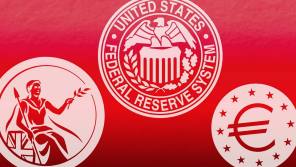

European investors poured more money into passive funds than active vehicles for the first time in five years.
Flows into passive funds domiciled in Europe, including the UK, hit nearly €78bn (£67bn) last year, therefore overtaking the amount of cash going into actively managed funds, which saw inflows of just €45bn (£39bn).
This marks a turnaround in the investment landscape after flows into active funds had surged ahead of those going into passives in every year after 2011, according to data from research provider Morningstar.
Matias Möttölä, research analyst at Morningstar, said the figures show that passive funds are winning market share in Europe.
But he also said active funds had been doing well in the four years prior because the markets had been upbeat since the end of the euro crisis.
“Active funds tend to mirror the moves of the market,” he said, pointing to the change in the distribution landscape as exchange-traded funds are increasingly used for short-term or tactical trading.
Mr Möttölä also said part of the attraction of passives last year was because interest rates were so low, which therefore diminishes expected returns and prompts investors to pay more attention to the costs and fees associated with their investments.
The Morningstar figures, which look back to 2007, also indicate that passive funds have seen inflows year after year.
Active funds, however, have suffered three years of outflows over this period, being worst hit during the financial crisis of 2008 when investors pulled €197bn (£170bn) from their investments.
But despite the political events which transpired last year, active funds still managed to see inflows, albeit a lot slower than the previous four years.
The Morningstar analyst said he thought active funds could again outpace the flows going into passives in the coming years, adding it all depended on whether the market mood is a positive one.
Philip Milton, managing director and financial adviser at Philip J Milton & Company, said it is easy to default to a passive strategy in order to mirror the index.
“The old adage – when everyone is buying indices it is time to buy actives – is probably just about ready to play out,” he said, adding of course the opposite is applicable too.
Continental Europe is not immune from the Brexit fallout, and many investors have decided to put their money in cash due to fears about the markets.
“We also generally find a trickle of ‘stupid’ people who have been fixated on the headline costs,” Mr Milton said, pointing out that some might think an ongoing fee of 0.75 per cent is better than 1.5 per cent when the latter can offer a far better outcome.
Ben Yearsley, investment director at the Wealth Club, also pointed to the price war in index investing which has made passives extremely cheap, suggesting the active industry should start becoming more competitive.
Mr Yearsley agreed that the low level of flows is largely down to nervousness, with worries about Chinese growth, mining companies going bust, and the fall in the oil price all putting a dampener on prospects, even before factoring in political issues such as Brexit.
“There are times when it is difficult to beat the index, and last year was one of those. However if you look at the previous three calendar years, the indices had a much tougher time, so I think 2017 will be better for active funds.”
He added: “If the main indices tread water this year and active funds show a good degree of outperformance then money will start to flow into them again.”



